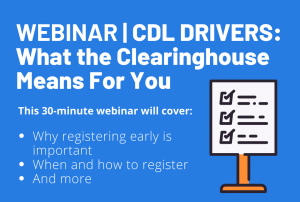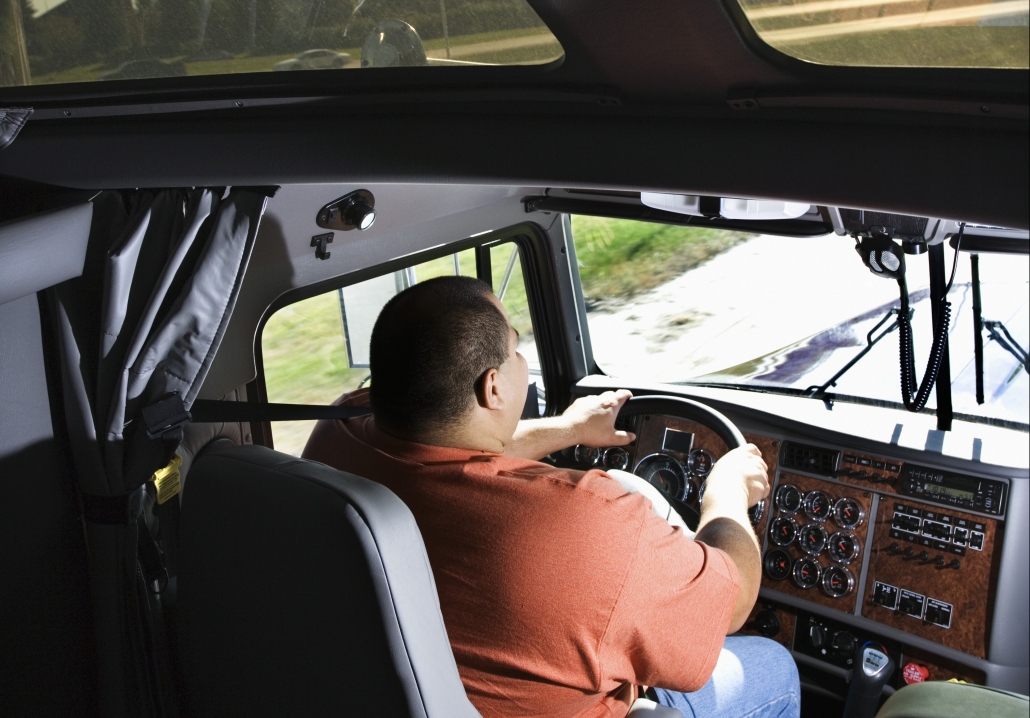 Whether you’re just starting out in the trucking industry or a seasoned CDL driver, you are likely familiar with the Federal Motor Carrier Safety Administration, or FMCSA.
Whether you’re just starting out in the trucking industry or a seasoned CDL driver, you are likely familiar with the Federal Motor Carrier Safety Administration, or FMCSA.
This agency, functioning within the Department of Transportation, plays a crucial role in regulating the trucking industry to enhance safety and reduce accidents on the road. By setting and enforcing safety standards, the FMCSA works to prevent commercial motor vehicle crashes, injuries, and fatalities.
Understanding FMCSA programs such as Compliance, Safety, Accountability (CSA), Hours of Service (HOS) regulations, and the National Registry of Certified Medical Examiners is essential for truck drivers to stay compliant and maintain safety on the road.
What Does the FMCSA Do?
The Federal Motor Carrier Safety Administration (FMCSA) plays a crucial role in regulating and overseeing the safety of commercial motor vehicles (CMVs) across the United States.
Established in 2000, the FMCSA’s primary mission is to reduce crashes, injuries, and fatalities involving large trucks and buses. By enforcing safety regulations, conducting roadside inspections, and investigating crashes, the FMCSA works to ensure that trucking operations adhere to strict safety standards.
Key FMCSA Programs and Regulations
To maintain compliance and promote road safety, truck drivers and carriers must understand and follow several FMCSA programs and regulations. Here are some of the most critical ones:
- Compliance, Safety, Accountability (CSA) Program
The CSA program is designed to assess the safety performance of carriers and drivers using a data-driven approach. It incorporates information from roadside inspections, crash reports, and violations to assign safety scores. These scores help identify carriers that may need intervention or further scrutiny.
Why It Matters:
- Helps prioritize enforcement efforts on high-risk carriers.
- Encourages trucking companies to improve safety practices.
- Affects a carrier’s ability to secure contracts and maintain operations.
- Hours of Service (HOS) Regulations
HOS rules dictate how long truck drivers can operate their vehicles before taking mandatory breaks to prevent fatigue-related crashes. Drivers keep compliant with HOS regulations by using Electronic Logging Devices.
Key aspects of HOS regulations include:
- 11-hour driving limit: Drivers can operate a CMV for up to 11 hours after 10 consecutive hours off duty.
- 14-hour rule: A driver may not drive after being on duty for 14 hours, including breaks and non-driving work.
- 30-minute break: A break is required after 8 cumulative hours of driving.
- 34-hour restart: Drivers can reset their weekly limit by taking 34 consecutive hours off duty.
Why It Matters:
- Prevents driver fatigue, reducing the risk of accidents.
- Ensures compliance with federal safety laws.
- Helps drivers and carriers avoid costly violations and penalties.
- National Registry of Certified Medical Examiners
Commercial driving can be tough on the body. To ensure that CMV drivers are physically fit for the job, FMCSA requires drivers to undergo regular medical examinations conducted by certified medical professionals listed on the National Registry.
Why It Matters:
- Ensures that drivers meet the physical requirements needed for safe operation.
- Helps prevent medical emergencies while driving.
- Keeps drivers compliant with FMCSA health standards to maintain their CDL.
The Importance of FMCSA Compliance for CDL Drivers
Failing to comply with FMCSA regulations can have serious consequences for drivers and carriers, including:
- Fines and penalties: Violations can lead to significant financial penalties.
- License suspensions: Repeated safety violations can result in the suspension of a driver’s CDL.
- Increased insurance costs: Poor safety scores can lead to higher insurance premiums.
- Loss of business opportunities: Carriers with bad safety records may struggle to secure contracts and may even have their authority revoked.
By staying informed and following these guidelines, truck drivers can protect their careers while contributing to a safer trucking industry.
Looking for more insights and updates on trucking regulations in 2025? Be sure to check out more posts on our blog and follow us on social media!






 The ELD mandate has been around since 2017, so unless you’re a new truck driver, you probably know about ELDs and the requirements surrounding them. But, if you are a new driver, here are the need-to-know facts about ELDs.
The ELD mandate has been around since 2017, so unless you’re a new truck driver, you probably know about ELDs and the requirements surrounding them. But, if you are a new driver, here are the need-to-know facts about ELDs.  A CDL suspension is the last thing any truck driver wants. It leaves a permanent mark on their driving record, leads to increased insurance costs, and there’s a financial loss for not being on the road. That’s why it’s important to know what can lead to a CDL suspension and how to avoid one. Here are the need-to-know facts.
A CDL suspension is the last thing any truck driver wants. It leaves a permanent mark on their driving record, leads to increased insurance costs, and there’s a financial loss for not being on the road. That’s why it’s important to know what can lead to a CDL suspension and how to avoid one. Here are the need-to-know facts. 











